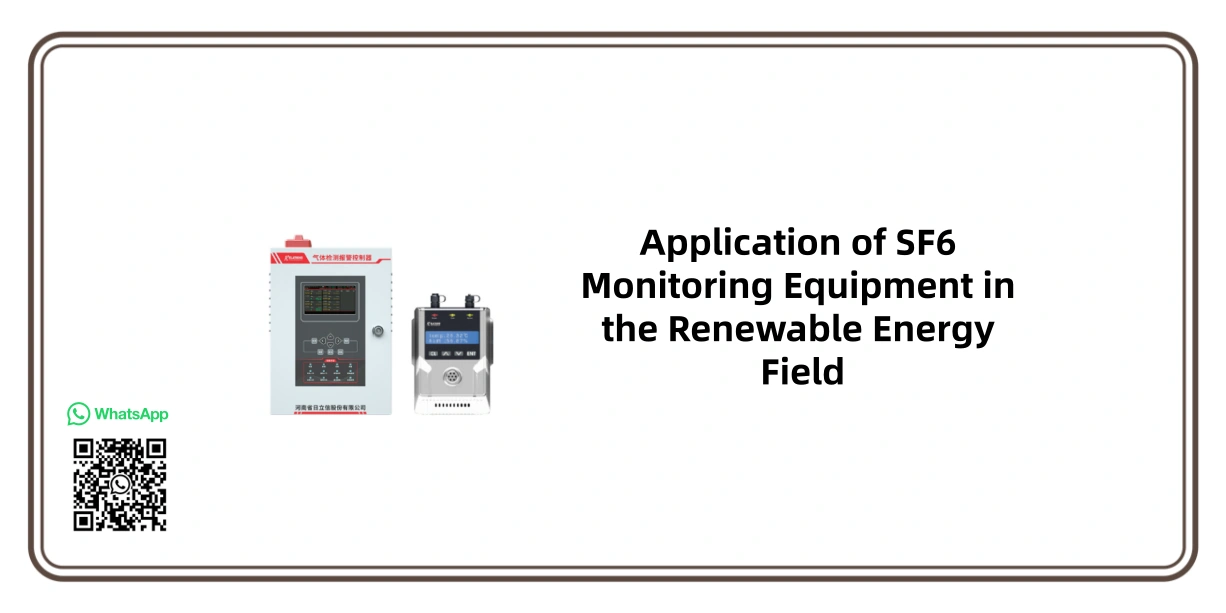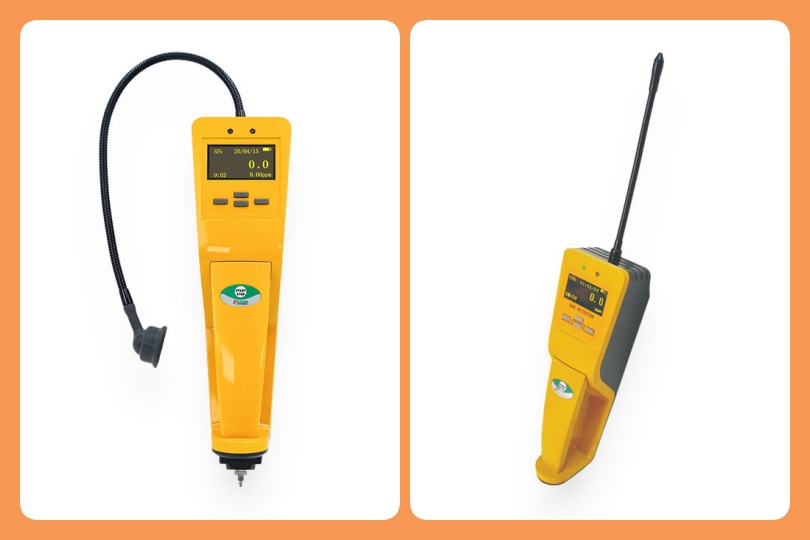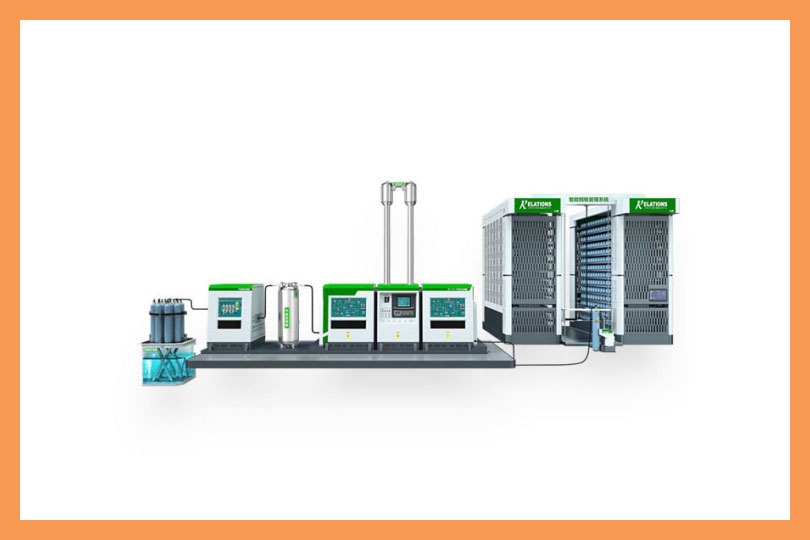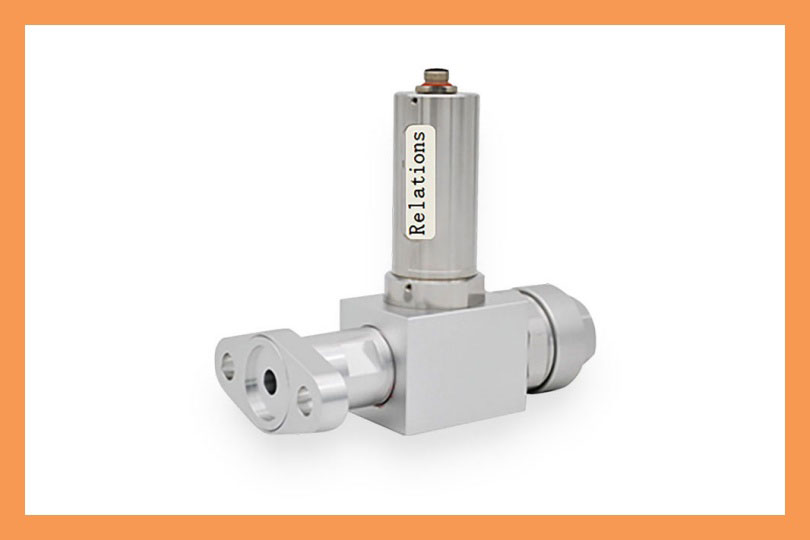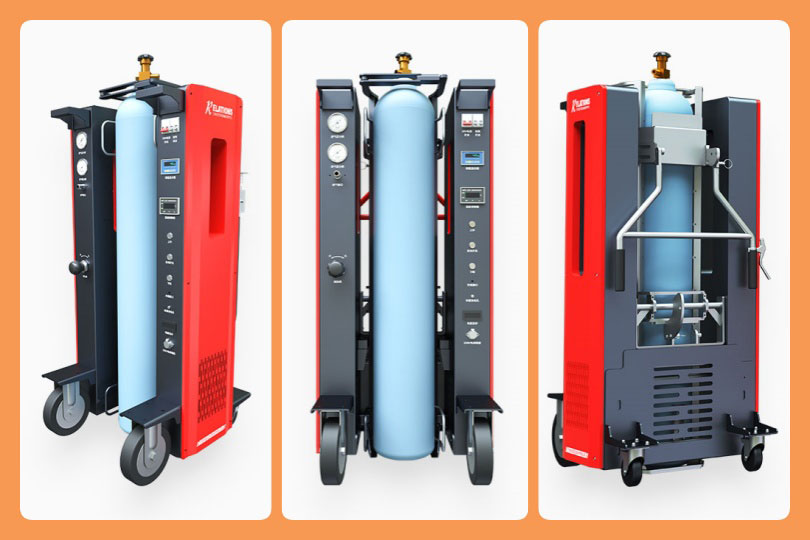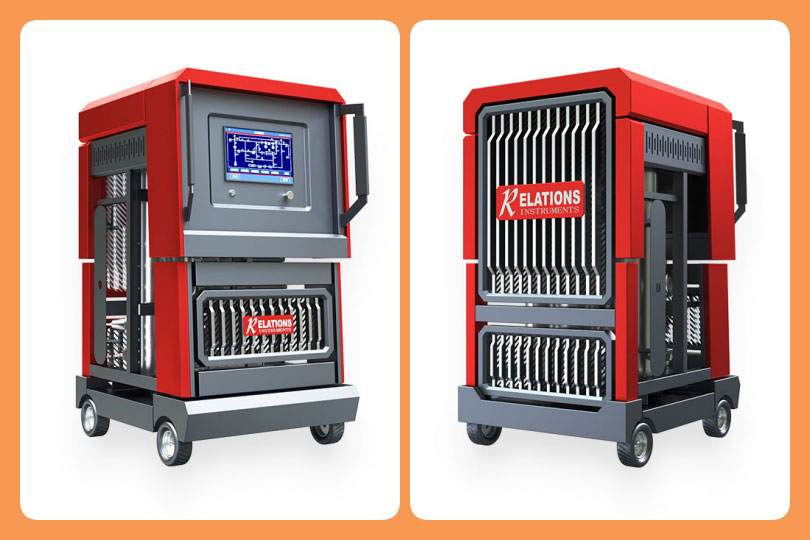Application of SF6 Monitoring Equipment in the Renewable Energy Field
Date
2025-11-10
[email protected]
Website
www.sf6gasdetector.com
Get Solutions And Quotes
Application of SF6 Monitoring Equipment in the Renewable Energy Field
With the global transition towards renewable energy, clean energy technologies such as wind and solar power have been developing rapidly. However, the efficient operation of these energy systems relies on high – voltage electrical equipment. SF6 gas (sulfur hexafluoride), due to its excellent insulating and arc – extinguishing properties, is widely used in high – voltage switchgear (such as gas – insulated switchgear GIS) and circuit breakers. Although SF6 gas performs outstandingly in the power industry, its high global warming potential (GWP) makes the monitoring and management of its leakage particularly important.
The applications of SF6 monitoring equipment in the renewable energy sector are mainly reflected in the following aspects:
1. Applications in Wind Farms
Wind farms are usually located in remote areas or offshore. A large number of gas – insulated equipment (GIS) are used inside wind turbines and in the power transmission system. SF6 monitoring equipment plays a crucial role in wind farms:
Application Scenarios:
- Real – time monitoring of SF6 gas density and pressure: When wind turbines or GIS equipment are in operation, SF6 gas must be maintained within a certain density range. Once the gas density decreases, it may lead to a decline in insulation performance and an increased risk of equipment failure.
- Leak detection: Strong winds or severe weather may induce equipment aging or sealing problems, resulting in SF6 gas leakage. The SF6 monitoring equipment can quickly detect leaks and issue alarms, reducing the environmental impact.
- Remote monitoring system: Since wind farms are often located in remote areas, SF6 monitoring equipment integrated with the Internet of Things (IoT) can achieve remote real – time data collection and analysis, reducing the cost and workload of manual on – site inspections.
Actual Case:
In an offshore wind farm, the SF6 gas monitoring system in GIS equipment combines intelligent sensors with a remote control platform, helping the operation and maintenance team promptly detect and handle gas leakage problems, avoiding downtime and environmental penalties.
2. Applications in Solar Power Generation Systems
Although solar power generation systems themselves do not require SF6 gas, the supporting high – voltage switchgear (such as substations and power transmission facilities) still need SF6 as an insulating medium.
Application Scenarios:
- SF6 density monitoring in substations: In the substations of large – scale solar power projects, SF6 gas is used in GIS equipment to achieve efficient and reliable power transmission. Through SF6 gas monitoring equipment, the gas can be ensured to operate within a safe range, avoiding equipment failure caused by excessive or too low pressure.
- Leak alarm: Solar power plants are usually built in arid or remote areas with harsh climatic conditions. SF6 monitoring equipment can provide stable leak detection services in harsh environments, protecting equipment and the environment.
- Data recording and analysis: The intelligent system equipped with theSF6 monitoring equipment can record the usage data of SF6 gas, helping power plant managers conduct long – term trend analysis and providing a basis for equipment maintenance.
Actual Case:
A large – scale ground – based solar power plant achieved comprehensive remote monitoring of GIS equipment by installing SF6 monitoring equipment. The analysis data provided by the monitoring system helped the power plant develop a more efficient equipment maintenance plan, reducing the risk of gas leakage.
3. Applications in Renewable Energy Micro – grids
Micro – grids are an important technology in the renewable energy field, used to integrate wind energy, solar energy, and energy storage systems. Micro – grids usually require miniaturized GIS and high – voltage switchgear, which also rely on SF6 gas.
Application Scenarios:
- Gas density management for miniaturized equipment: The GIS equipment used in micro – grid systems is usually small in size and has higher requirements for gas density. SF6 monitoring equipment can accurately measure density, pressure, and temperature to ensure stable equipment operation.
- Modular monitoring: Distributed power equipment in micro – grids can be managed through a modular monitoring system. The SF6 monitoring equipment of each module can operate independently and be integrated through the data cloud to provide an overall monitoring view.
- Rapid leak response: For key equipment in micro – grids, once an SF6 leak is detected, the monitoring equipment can quickly alarm and trigger an automatic response mechanism (such as cutting off power or starting a sealing device) to prevent the spread of system failures.
Actual Case:
An intelligent micro – grid project achieved comprehensive management of multiple GIS modules by deploying distributed SF6 monitoring equipment. Real – time monitoring data is transmitted to the control center through the cloud, helping the operation and maintenance team achieve a rapid response.
4. Applications in Environmental Protection and Regulatory Compliance
Due to the high greenhouse effect potential of SF6 gas, many countries and regions have implemented strict regulations on the use and emission of SF6 (such as the EU’s F – Gas regulations). In the renewable energy sector, the use of SF6 monitoring equipment can help enterprises meet these regulatory requirements.
Application Scenarios:
- Emission monitoring and recording: SF6 monitoring equipment can accurately record the amount of gas leakage, providing detailed emission data for enterprises for audit or reporting purposes.
- Active emission reduction strategies: Based on the leakage data provided by the monitoring system, enterprises can develop emission reduction plans, such as optimizing equipment maintenance cycles or adopting more stringent sealing technologies.
- Regulatory compliance proof: The data generated by the monitoring equipment can be directly used for environmental compliance reviews, helping enterprises avoid penalties for illegal emissions.
Actual Case:
A wind farm established a comprehensive SF6 emission recording system by introducing intelligent SF6 monitoring equipment, successfully passed the annual review of the local environmental protection bureau, and obtained a green certification with no emission fines.
5. Optimization of Operation and Maintenance in the Renewable Energy Sector
SF6 monitoring equipment can also significantly optimize the operation and maintenance strategies of renewable energy projects:
Application Scenarios:
- Predictive maintenance: The monitoring equipment can provide real – time data and trend analysis, helping the operation and maintenance team predict equipment aging or leakage risks and carry out maintenance in advance.
- Reducing downtime: Through a rapid detection and alarm system, SF6 monitoring equipment can alert operators before problems occur, avoiding unnecessary downtime.
- Reducing operation and maintenance costs: The remote monitoring function reduces the frequency of on – site inspections, lowering labor costs and improving efficiency at the same time.
Actual Case:
An offshore wind farm detected an early leakage problem by deploying SF6 monitoring equipment, avoiding the failure downtime of GIS equipment and saving hundreds of thousands of dollars in repair costs.
Key Functions of SF6 Monitoring Equipment in the Renewable Energy Sector
- Real – time monitoring: Monitor the density, pressure, temperature, and leakage of SF6 gas to ensure the safe operation of equipment.
- Remote data transmission: Achieve real – time monitoring and management of equipment in remote areas through IoT technology.
- Intelligent analysis: Provide trend analysis and prediction functions to assist in formulating maintenance plans.
- Support for environmental compliance: Generate emission reports to meet environmental regulatory requirements.
- Automatic alarm: Immediately trigger an alarm and start a response mechanism when gas leakage is detected.
In the renewable energy sector, SF6 monitoring equipment is an important tool to ensure the safe and efficient operation of wind farms, solar power plants, and micro – grid systems. It can not only improve the reliability of equipment operation but also help enterprises meet increasingly strict environmental regulations and reduce their carbon footprint. Through real – time monitoring, remote management, and intelligent analysis, SF6 monitoring equipment provides strong support for the operation and maintenance of renewable energy projects and contributes to the realization of green energy goals.
